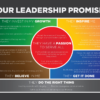And the question is.... are you ready? Are you ready for a continual cycle of discomfort? What is your strategy for making the most of it? What are you doing on a daily basis to adjust to it? What are you doing mentally to find comfort in being uncomfortable?
Yesterday, my husband and I ventured out to test drive a Tesla. We spent about an hour in the showroom learning about it and soon realized how different it is than what we drive today. It had many features that in my mind make a lot of sense. All electric motor means no more oil changes, no more fuel stops, less moving parts so less maintenance. Awesome!! It also had some features that may sound enticing but you don't really understand the power of until you experience them for yourself.
For example, a car that drives itself.... I love the idea of it. I think back to my younger years of multi-tasking while driving from point A to B. It probably would have been a bit safer than relying on luck and my secondary senses! There are certainly other advantages for people with permanent or temporary disabilities. But what is that really like? I am very used to having CONTROL l of my car. In the spirit of sharing and to hopefully bring some comedy to your day, here is a brief glimpse into my experience (I apologize in advance for the words exiting my mouth in the first 10 seconds):
A bit of discomfort would be an understatement! I literally had a physical reaction to the experience. And yet, in all likelihood, I realize that in the long run, this will be the new normal. Just as our grandparents and great grandparents likely felt that same level of discomfort riding in a car at 60 mph, 100 years later, it is so normal that we do it every day without a second thought. Think about what life would be like if cars did not exist today and you can easily see that it is a critical key component of our culture, society, and economy.
DISCOMFORT LESSON #1: If you find that you are resisting change, it may be your addiction to CONTROL that is limiting you from moving forward. Let it go and the possibilities become endless.
Another feature in the Tesla performance model is the ability to go fast in an extraordinarily short amount of time. 0-60 mph in 2.8 seconds to be exact. Just press the "Ludicrous" power setting and fully deploy the accelerator. I have no idea what it really means to accelerate that fast. Not being a race car driver or a drag racer, I don't much care as it is not something I regularly use. I tell myself, "when is there ever a real reason to move that fast?. It's not practical." It's the same internal dialogue may people have in the business setting... all while shareholders and Board of Directors demand changes occur at that that speed. Leaders do their best to accommodate and the "do-ers" on the ground often have an experience like this:
NOTE: I literally couldn't stomach accelerating that fast and lifted my foot off the gas a half second later when the car had only reached 27 mph. Knowing what to expect the second time, I figured it wouldn't be as bad...
NOTE: I hit the 35 mph mark, but realized that there may be some new skills I need to acquire before I can actually reach 60 mph in 2.8 seconds.... like getting accustomed to that kind of force on my body so I don't lose consciousness in the process.
DISCOMFORT LESSON #2: The people who achieve more in less time are the ones acquiring the skills to accommodate that pace. The organizations who expect and demand that of their "doers" must be willing to invest in the development of their teams in order to achieve those goals.
The fact is this is the new normal. Technology is changing at unprecedented speeds. The expectation for our economy to continue to grow and evolve requires companies to move from one point to another faster than we have ever done before. In order to get there, we as individuals must learn to get comfortable with discomfort. This is a mindset change. It's something internal that is needs to change before the external environment will change. With this mass requisition for internal change also comes the requirement for organizations to invest in programs, classes, and trainings to enable their teams to accommodate the external change by focusing on the often overlooked requirement for internal change.
As the upcoming year presents new challenges, are you ready? Are you ready for a continual cycle of discomfort? What is your strategy for making the most of it? What are you doing on a daily basis to adjust to it? What are you doing mentally to find comfort in being uncomfortable?










Williamvads